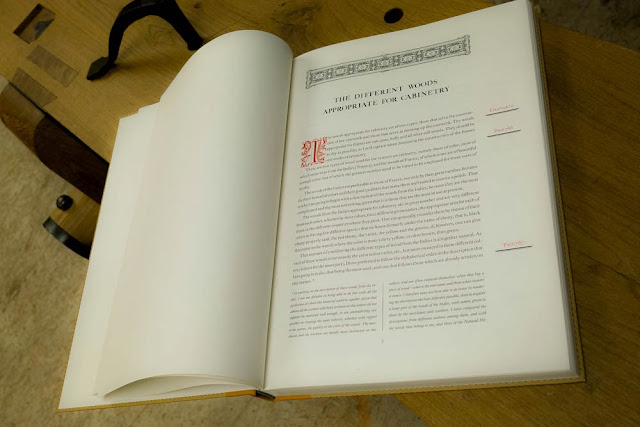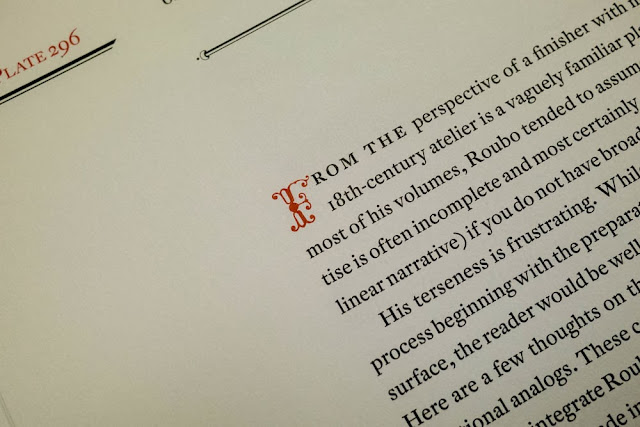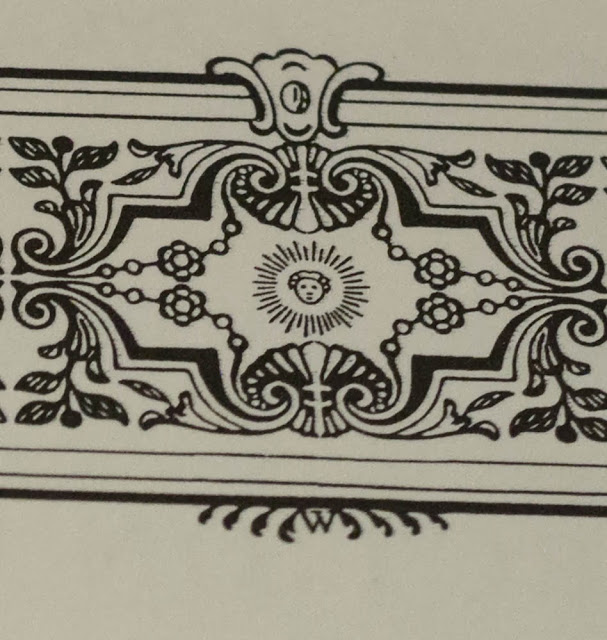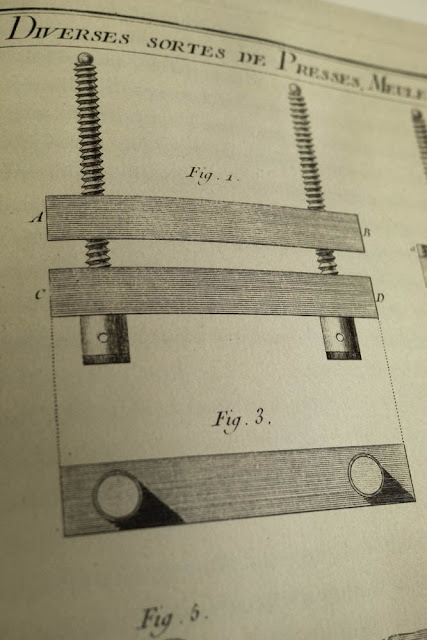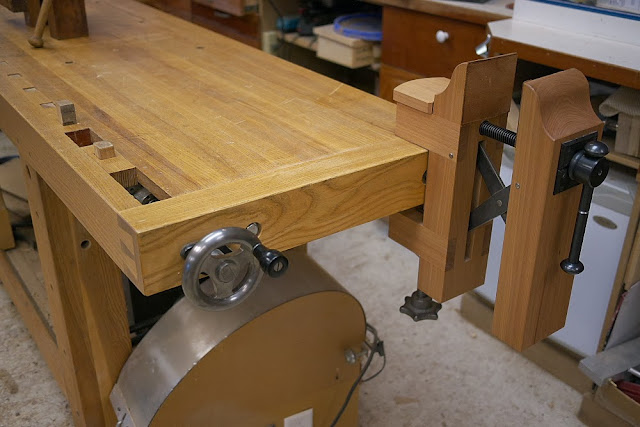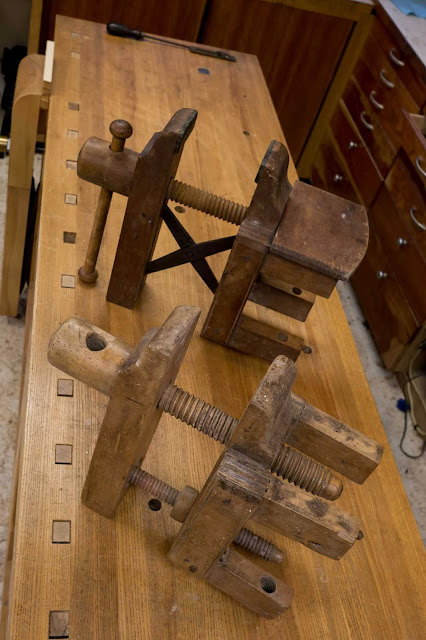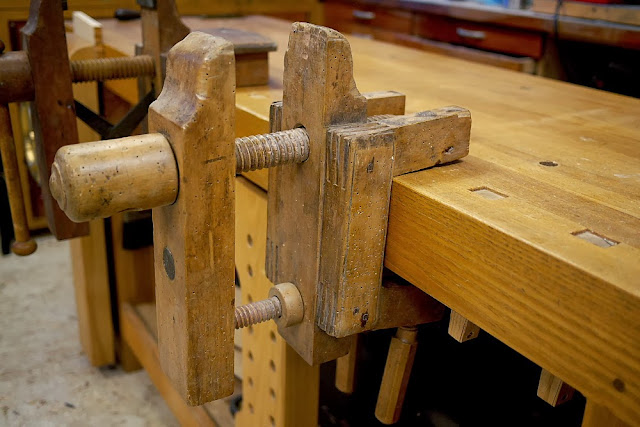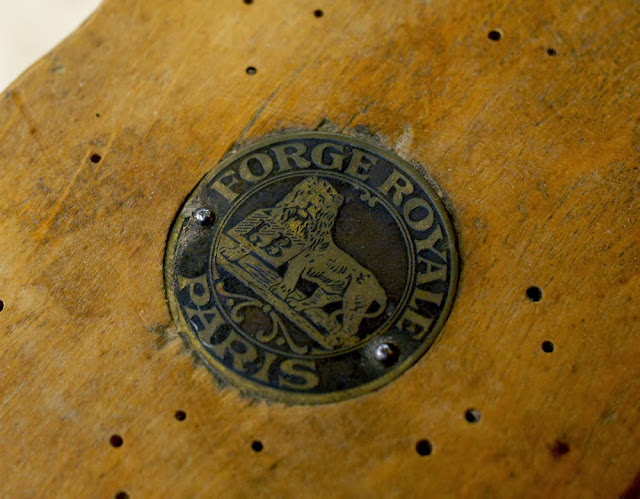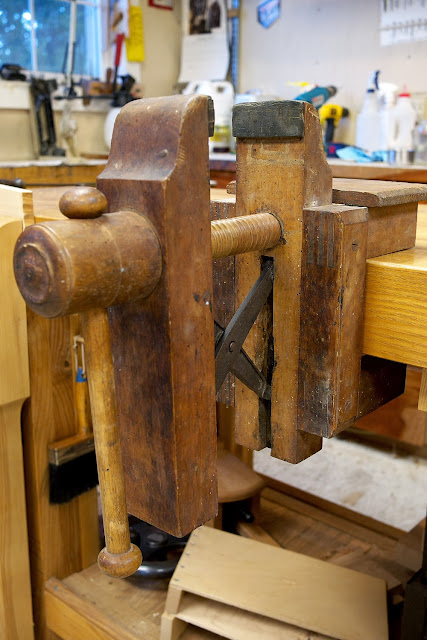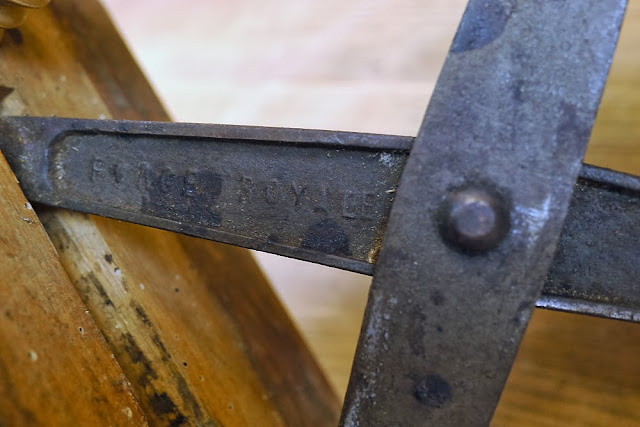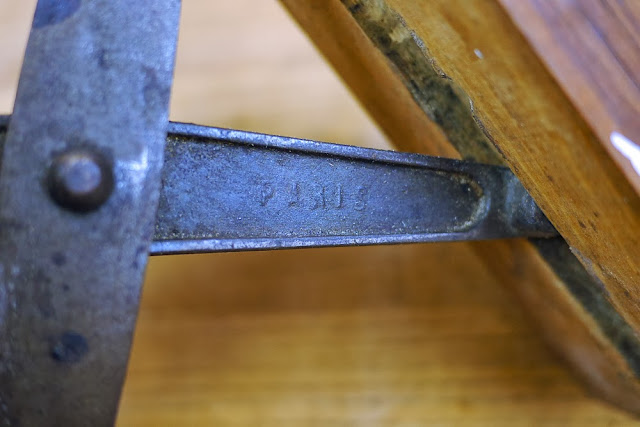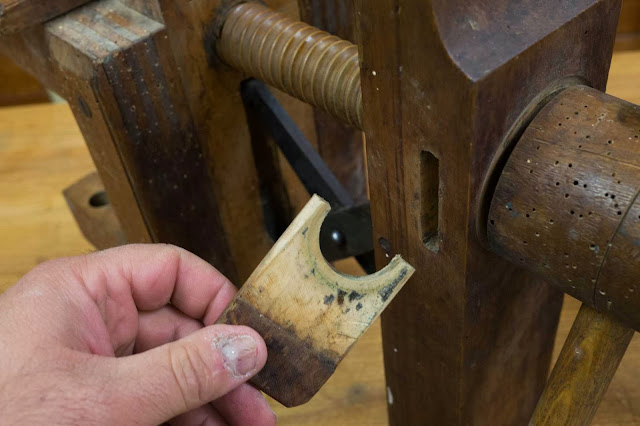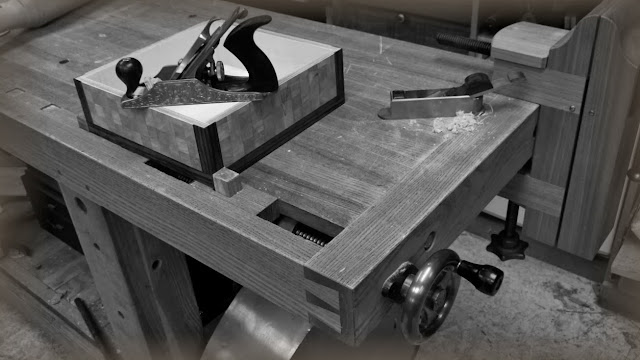Last week was one to remember. I traveled to a secret location to do two things. Make good on an invitation from Don Williams to lend an extra set of eyes in examining H.O. Studley's piano-maker's vises (more on that soon) and take delivery of my deluxe copy of "To Make As Perfectly As Possible."
Here's a dilemma I thought I'd never face. I walk into the room with the Studley chest and bench. Don points and says, "there it is (the chest), and there's your book." I get a blank look on my face, and wander over to the chest. I stare for probably 5 minutes (maybe more). Don eventually says, "aren't you going to look at the book?" I say, "um, yeah, I probably should" or something idiotic like that.
Eventually I pull myself away from the chest and open my deluxe TMAPAP. It's imposing, like the chest. I want to peruse the tome, but it's hard to focus with Studley and Roubo doing battle for my attention. I make a decision and close the book. I'm a few steps away from the Studley ensemble, and I only have the morning to examine it. The book goes in the car and awaits its turn back home.
Finally I get a chance to examine the book up close. I'm in my office, sitting at a trestle table I built, sitting in a chair built by the editor of TMAPAP. It feels right this time. I slip the book out of its cover and open to the first page. It says in small print "To Make As Perfectly As Possible". I touch the next page and immediately try to separate it from the next page. It doesn't separate. The paper is thick. So thick that it feels like two sheets. It's intentional. A page of this size needs extra thickness for durability. If it were thinner, I could tear it.
The first thing that I notice is the color of the paper and text. It's friendly to the eyes. The font is large and easy to read. It's inviting. Then I turn another few pages and I encounter a beautiful little dropcap letter F. It's made up of stylized vegetal designs and is just the right amount of stylized that my eye has to pause ever so slightly to make out the letter.
I turn another page and a beautiful decorative element at the top of the page presents itself. It's crisply designed and printed. I take a picture of it and check the shot on the screen of my camera. I zoom in to see if I'm in focus. And I see something that my naked eye didn't catch.
In the very center of the design is a subtle change. There is a tiny head in the middle, unlike the elements elsewhere in the design. The head is only 1/8" high.
On the same page is a glorious drop cap with acanthus leaf elements. It's the first word of text in TMAPAP. I begin reading, but I only last about half a page. I've already found a problem with the book. I can't focus my attention both on the content of Roubo's masterpiece, and also on the masterpiece that is the design of the book itself. They must be taken in separately. I turn more pages to taste more of Wesley Tanner's work.
A plate appears and I take my glasses off for a closer look. The detail is excellent. I can see everything the engraver intended.
As I read on, I discovered on interesting section on Roubo's "Moxon" vise (that felt weird to write.) I was familiar with this plate, but never with accompanying text, which was quite fascinating to read.
"After benches, vises are the greatest tools of the cabinetmaker. They are of two sorts, namely,
those of Figs. 1 and 3, in which the movement is made horizontally, and of which the screws have
holes to receive iron rods, serving to move them. These vises are composed of two twin vertical
supports, AB and CD, which are of 5 to 6 thumbs in size, by 3 to 4 thumbs of thickness, because of
their lengths [in order to resist bending], which varies between 2 to 4 feet, that is to say, in that of
AB, the screws are tapped in [the rear jaw], instead of their entering completely [being tapped] in
the other [front jaw]. The length of screws of these vises should be around two-thirds the length
of the former [vises mentioned in the previous section], and 2 to 3 thumbs diameter. One should
take care that their heads are bound with an iron ring in order to prevent their splitting while one
forces them in making them move. See Figs. 1 and 3. One makes use of these vises on the bench, in
order to saw while upright, to work on the piece, or to glue the work. In one or the other of these
different cases, one secures the bench vise with two clamps so that they will be held in a fixed and
unvaried manner."
That's Roubo's "Moxon vise " alright, "...in order to saw while upright."
As I delve deeper into the book I realize this is like no other woodworking book I've ever encountered. There is an assumption in Roubo's tone that you are serious about the material he's presenting, yet he does it without presumption or arrogance. He's like your favorite teacher, one you love, but one you're also a little afraid of. After reading a good portion of the book (and I need to go back and re-read it again) I can no longer look at modern woodworking the same way. The vast majority of us are just barely scratching the surface of what Roubo and his contemporaries were capable of. We're all dabblers by comparison. I don't mean this in a degrading or insulting way. Rather, I mean it as a refreshing realization that there are high standards out there to aspire to in our woodworking. And the classy way in which Roubo presents his material is inspirational on many levels. This book has refreshed my interest in the craft like few things have.
If you didn't get on the list for a deluxe edition, Lost Art Press will be selling off the few remaining copies from the first run. Even if you don't read the text, the book itself alone is worth the price.
I hope to begin exploring some of Roubo's parquetry techniques in the future. I've been waiting years to try his method, and now that I have the text, its full speed ahead. I will be blogging about that experience as I go.
